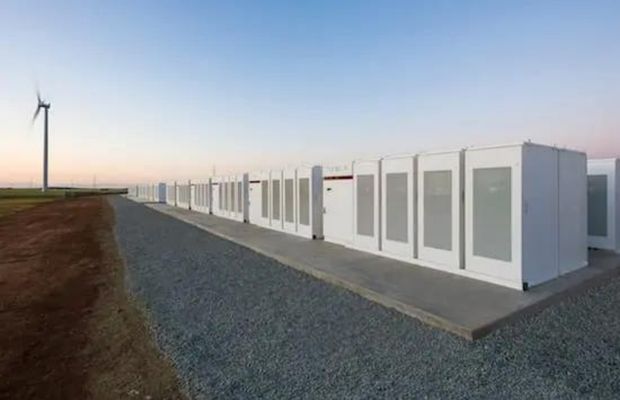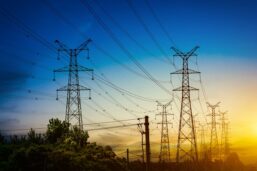Highlights :
- Big batteries store or release a large amount of power as per the requirements
- They also absorb the dangerous overload, instantly, and restore the balance when supply outstrips demand
- They help in stabilizing the grid – keeping the frequency and voltage at levels that ensure the safe supply of electricity

Big batteries, or battery energy storage systems (BESS), are attracting investors as the renewable energy demand climbs to new highs. Various governments and private companies are investing in big batteries to expand their network storage capabilities. From the pioneering 150 MW Hornsdale big battery in Australia to the recent SECI tender for a 500 MW Energy storage tender in India, big batteries are here to stay, getting bigger and better all the time.
In just the month of August, US investor, BlackRock, recently purchased Australia-based battery storage developer, Akaysha Energy. The firm looks to develop a portfolio of nine big battery projects in Australia in the next three to five years for a $1 billion investment. In Hawaii, Clearway Energy delivered Oahu’s largest solar and storage project. But unlike other similar projects, this one can funnel that production into an onsite battery array that can hold 156 megawatt-hours for use at night.
Big Batteries have become a part of European renewable energy establishments as well. A British renewable energy group, Octopus Energy, also built upon similar plans as the firm invested in battery storage and solar projects developer Exagen, via a new €220m renewables fund – with the intent to help reduce Europe’s dependence on gas imports and to lower energy bills in future.
In India, in a recent Solar Energy Corporation of India auction for one of the largest large-scale battery storage project anywhere, JSW Energy emerged as the lowest bidder with a winning bid of Rs 10.84 lakh per MW.
So, what is it about? What are big batteries? How are they relevant to renewable energy?
Why Big Batteries?
For starters, Battery Energy Storage Systems provide electricity grids with a wide range of benefits. Apart from storing huge energy, additional uses of batteries – like energy market participation and load shifting – may offset the costs and suspend the need for additional generation infrastructure or network upgrades to meet the demand.
The world is fast moving towards renewable energy to substitute pollution-causing fossil fuels. But there remains a challenge with popular renewable sources of energy – sun and wind. During cloudy or calm days, the solar and wind installations do not reach energy requirements. Though, during a sunny and/or windy day, the amount of energy produced may even exceed the requirement. Hence, coupling big batteries with renewable energy generation will help to manage the excess energy – be stored when demand is low, and released when demand is high. This will enable more renewable energy to be traded and used at times when the sun isn’t shining or the wind isn’t blowing.
Some of the traits that make the big battery a revolutionizing technology are as follows.
Utility
Big batteries act as a recourse in times of imbalance in the supply or demand of electricity. They store or release a large amount of power as per the requirements, instantly. The energy in question is huge as much as to power thousands of homes for a matter of hours or days. This depends on the size of the batteries.
Hence, they help in stabilizing the grid – keeping the frequency and voltage at levels that ensure the safe supply of electricity to consumers, avoiding disconnections and blackouts.
One such battery was built by Tesla as early as 2017. Officially known as the Hornsdale Power Reserve, it boasted a 100MW, or 129 MWh, capacity. Simply, it could power around 45,000 homes for about an hour. The technology even proved its worth as it saved over $150 million in costs to energy consumers within two years of service. The success of Tesla’s big battery prompted many large-scale battery projects planned or in development in Australia.
In addition to the variable nature of solar and wind energy supply, there are several reasons why supply or demand might suddenly change. For instance, an ageing coal-fired generator might fail; a storm may damage major transmission towers, preventing power from getting to where it needs to be; or a large energy consumer might experience a fault, disconnect from the grid and reduce demand.
Alternative to Other Options
When the electricity supply from the grid witness any such anomaly, peaking power plants are called upon to deliver the shortfall. This may be big batteries, gas-fired plants, or pumped hydro.
While the gas and pumped hydro options are great, delivering enough energy to meet the shortfall in a matter of minutes, the critical advantage of big batteries over these is their rapid response and flexibility. Big batteries can be repeatedly turned on or off in a fraction of a second, without any damage. Being not so quick to respond, other options suffer wear and tear from being turned on and off regularly. In addition, they are costly to run.
Moreover, batteries are even able to instantly absorb the dangerous overload, and restore the balance when supply outstrips demand.
Managing Frequency
The electricity grid operates at a frequency of 50 Hz when electricity supply and energy demand are perfectly matched. The frequency increases when the supply is in excess. Conversely, it drops when demand outstrips supply.
Big batteries take care of this. There are smart inverters that connect them to the grid. These inverters convert the power from the wind or solar farm from DC to AC, as usable on the grid. Inverters rapidly respond to frequency and voltage fluctuations by charging and discharging. Furthermore, they are precise, versatile and cheap to operate.
They are more efficient than coal plants in doing this. Coal plants exhibit frequency control through an inertial response for 3-6 seconds. A big battery can do this almost instantaneously.
Big Batteries are Cost Effective
With all such positive impacts, one would expect it to be a costly affair to go with a big battery. It is not. Big batteries are, relatively, quick and simple to install. They are cheap to operate and maintain.
According to one research by the Clean Energy Council, on comparing the costs of a new 250MW gas-fired generator with those of a 250MW big battery project, the services of the battery were 30 per cent cheaper.






























